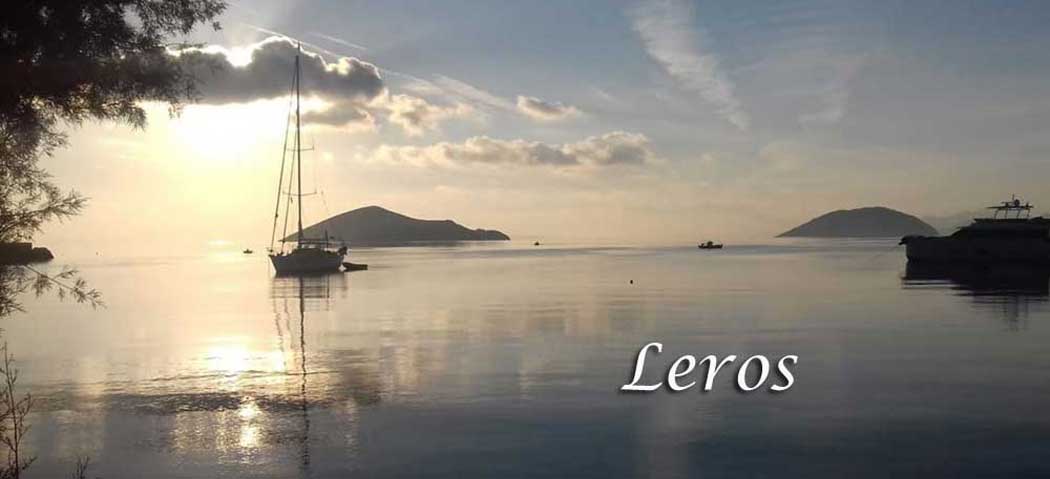Brief introduction to the history of Leros island Greece
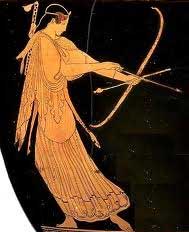
Leros is also known as the island of Artemis. It is the island of the ancient historian Pherekydis and the Philosopher Demodocus. The first inhabitants of the island were the Phoenicians, the Kares and the Leleges. Leros participated in the Trojan War as Homer tells us.
Due to the fact that it had close economic, cultural and political relations with Miletus, Leros had a strong influence from the Ionians. In 494 BC, Leros together with Miletus were captured by the Persians. During the Peloponnesian War, Leros supported the Athenians.
The island’s coves often offered safe havens for those in a state of war. Leros after the Peloponnesian War fell under the rule of the Spartans. He then followed the fate of the rest of the Dodecanese islands during the years of Alexander the Great and his successors, Roman times and the Byzantine period.
In 1309 it was occupied by the Knights of Agios Ioannis, who stayed until 1521, when the island was occupied by the Turks.
Ancient times
The first inhabitants of Leros are said to be Cares and Leleges, and Homer includes it among the Aegean islands that participated with naval power in the Trojan War. Thucydides pointed out the special importance of the bays and ports of Leros during the Peloponnesian War (431 – 404 BC), in which Leros supported the Athenians. The end of the war also marked the beginning of the rule of Leros by the Spartans. Also on the island is the well-known sanctuary of the Goddess Artemis.
It followed the course of the rest of the Dodecanese during the Alexandrian, Roman and Byzantine years. After the division of the Roman Empire, like the rest of Greece, it was ruled from Constantinople, the capital of Byzantium. On the islet of Farmakos, east of Leros, Julius Caesar was captured by local pirates for about 40 days.
Venetian and Ottoman Period
During the late Byzantine period, the island was incorporated into the Theme of Samos. During the thirteenth century, the island was occupied by the Genoese and later by the Venetians. In 1309, the Ioannite Knights conquered and fortified Leros. In 1505, the Ottoman admiral Kemal Reis with three galleys and seventeen battleships besieged the castle, but failed to capture it.
The venture was repeated in 1508 with more ships, with the same unsuccessful result. Legend has it that that time the island was saved by the one and only surviving knight. He was only 18 years old. He dressed women and children in the armor of the dead knights, thus deceiving the Ottomans that the garrison of Leros was still strong. Finally, on December 24, 1522, following the siege of Rhodes, a treaty was signed between Sultan Suleiman and the Grand Lord of the Knights, Philippe Villiers de L’Isle-Adam, and Leros, together with all the Order’s possessions in the Aegean, passed to Ottoman hands.
During the Ottoman rule, Leros enjoyed, along with other islands, a privileged status of partial autonomy, thus having its own administration. In 1648 and during the fifth Venetian-Turkish war, it was under the command of the Venetian admiral Leonardo Foskolos and his men who landed on the island.
In 1824, after the Greek Revolution of 1821, for three years the island was liberated and became an important supply base for the Greek Navy. It was governed by a Greek Province and was under the jurisdiction of the Provisional Committee of the Eastern Sporades
Leros in 1821 had its own contribution to the struggle. Noteworthy is the letter of the Mayor of Leros to the Revolutionary Government, in Hydra, on May 8, 1821, in which they unequivocally stated the slogan of the liberation struggle “FREEDOM or DEATH”. In May 1821, the prefects of Leros, wanting to have a direct understanding of things, sent to Hydra two men from Leros, Manolis Repapi and Manolis Christou, who wrote a letter addressed to the “Lord and Ruler of the Nation” .
At the beginning, they mention the atmosphere of satisfaction and joy that prevails on the island, when the news arrives with the letters of Alexander Ypsilantis, about the start of the Revolution, to shake off the barbaric yoke.
Italian period
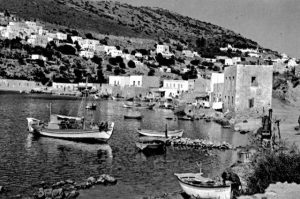
After the end of World War I and immediately after the Armistice of Mudros, the Paris Peace Conference or Peace Conference (1919) followed. In Venizelos’ memorandum (12-30-1918) the Greekness of the Dodecanese islands and the principles proclaimed by the American President Wilson for the freedom and self-determination of the peoples were highlighted, calling on Italy to hand over the islands to Greece.
In that highly charged international climate, a dynamic group of Dodecanese patriots, alongside the official actions of the Greek delegation, arrives in Paris and London. They are the envoys of the “Union of the Dodecanese of Athens”: Skevos Zervos, Paris Roussos, Michael Volonakis, Georgios Antoniou, while Lerios Theodoros Moschonas served at the Manchester Consulate. Their mission was to inform and sensitize government officials and delegates about the rights of the Dodecanese people. For this purpose, they worked hard in the previous period, writing and printing information leaflets, books and all kinds of printed material.
From 1916 to 1918, the British used Leros as a naval base. With the Venizelos-Tittoni Pact, the island would return to Greece, along with all the Dodecanese, except Rhodes, but, after the Greek defeat in the Greco-Turkish War (1919-1922), the Italians canceled the agreement. The Treaty of Lausanne confirmed the Italian possession of Leros and the Dodecanese.
The new Italian fascist regime actively attempted to “Italianize” the Dodecanese by making the learning of Italian compulsory, incentivizing locals to acquire Italian citizenship, and abolishing Greek institutions. In the 1930s the Italian authorities built the town of Portolago, according to the criteria of the new Italian urban planning model. Today it is one of the most representative examples of Italian rationalist architecture. The Greeks later called it Lakki.
At the same time, extensive settlement took place. Characteristically, in 1936 approximately 7500 Italians lived on the island, which made Leros the only island of the Italian-occupied Dodecanese where the Italian population exceeded the native population.
Agios Georgios Drymonas
During the 31 years that the Italians remained on Leros, they made a great plan of town planning and fortification of the island, as its strategic location and its large, natural harbors (the largest of which, Lakki, is the largest natural harbor of a large depth in the Mediterranean Sea, made it an ideal naval base. The fortification of Leros, as well as the construction of a large naval base at Lakki, ensured Italian control of an area of vital importance to the Allies (the Aegean, the Dardanelles and the Middle East .Mussolini saw the island as a base of paramount importance for Italian rule in the eastern Aegean, just as Portolago was the ideal place to build a holiday villa.
Leros during World War II
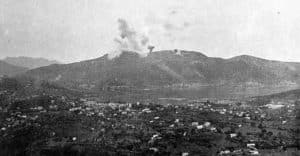 With the start of the Greco-Italian War, many Dodecanese immediately volunteered, forming the Dodecanese Regiment. Among the first to rank at that time was Lerios mathematics professor Apostolos Evangelou. After the collapse of the front, he escaped with many others to the Middle East.
With the start of the Greco-Italian War, many Dodecanese immediately volunteered, forming the Dodecanese Regiment. Among the first to rank at that time was Lerios mathematics professor Apostolos Evangelou. After the collapse of the front, he escaped with many others to the Middle East.
From there he found himself in Crete, where he developed intense espionage against the Germans who arrested him and executed him, after horrific torture. His bust, in the courtyard of the Bellenei Gymnasium of Leros, reminds modern Lerios, especially children and young people, of his patriotism, determination and militancy, and that of all his comrades-in-arms.
Many young Dodecanese and among them several from Leros, especially after September 1943, escaped secretly in boats to the coasts of Asia Minor and from there to the Middle East (Palestine, Egypt), where they were placed in various units to fight against the Axis.
Leros in the midst of the war
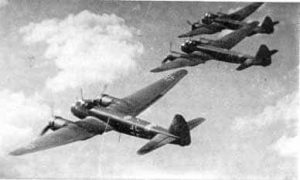
On September 8, 1943 during the battle of Leros, when Italy realized that it could not continue the War by supporting the Germans, it signed an armistice and went over to the Allied side. When British reinforcements arrived in Leros and the rest of the Dodecanese, the island suffered further bombardment, this time by the Germans.
Among the first air attacks was the one against the Greek A/T Vasilissa Olga D-15 and the English [(Intrepid)], which sank on Sunday, September 26, 1943, while anchored in Portolago, today’s Lakki. Dozens of Ju 87 and Ju 88 raids followed, over 52 days. Eventually the island of Leros was captured by German troops during the Battle of Leros, Operation Taifun, with air and amphibious assaults between November 12 and 16, 1943. The forces involved were paratroopers, a battalion from the elite division of Brandenburg. The infantry troops were supported by “Luftwaffe” bomber planes. Among them were squadrons I. and II. from Stuka-Wing 3. Squadron I. operated from the Megara military base. The island remained under German occupation until the end of the war.
Modern History
After the Germans evacuated the island, it came under British administration until March 7, 1948, when, along with the rest of the Dodecanese, it joined Greece. 600 years after the end of Byzantine rule, for the first time the Dodecanese were integrated into the Greek state.
